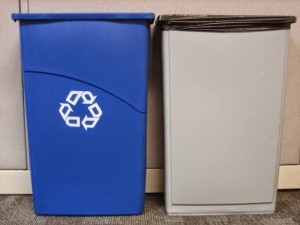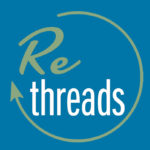Single Stream
Single stream recycling requires households to use two bins- one for trash, one for recyclables. Recyclables are then sent to a clean Materials Recovery Facility (MRF) for further sorting. A MRF uses a combination of hand sorting and machinery to separate materials which are then baled and sold. To learn how a MRF works, check out this cool animated video.
Single stream allows communities to incentivize recycling and increase participation by using larger recycling bins (same size or larger than trash bins), charging [more] for trash pickup, or reducing trash collection to two times per month.
Pros
- Putting all recyclables in one bin is easier for households than separating by type
- Allows communities to incentivize recycling
- Proven to increase participation rates
- Requires fewer collection trucks
Cons
- Lower quality than source separation, which can lead to lower price at market
- Food and liquid can contaminate materials, particularly paper
- Sorting is imperfect, though technology is improving
Bottom Line
Combining single stream recycling with composting of food and yard waste reduces contamination and produces high-quality recycled materials- see our vision here. It is important to place only empty and clean items into your bin and follow all guidelines set by your hauler.





